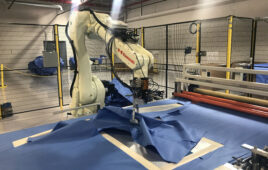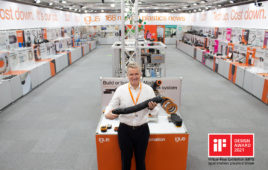Leland Teschler, Executive Editor
[email protected]
On Twitter @DW_LeeTeschler
Teschler on Topic
News reports of the Covid-19 virus have given a lot of space to the shortage of respiratory ventilators. The Society of Critical Care Medicine claims at least 950,000 U.S. patients could need ventilators but hospitals only have 160,000.
One response to statistics like these has been a movement among open-source promoters to initiate community-designed ventilators that can be inexpensive and assembled quickly.
There are several of these efforts afoot. Canada has one called the Code Life Ventilator Challenge. Others are being  coordinated from hackaday.com and helpfulengineering.org to name just two. Schools that include M.I.T. and the University of Minnesota have groups working on their own lab-built ventilators.
coordinated from hackaday.com and helpfulengineering.org to name just two. Schools that include M.I.T. and the University of Minnesota have groups working on their own lab-built ventilators.
But there is one thing to keep in mind about these well-intentioned efforts: It’s unlikely any of them will result in hardware able to treat Covid-19 patients, at least not in the U.S.
The reason concerns the regulatory requirements of the U.S. Food and Drug Administration for any kind of life-critical gear used on human patients. These regulations aren’t just bureaucratic paperwork. They are in force because it turns out to be relatively easy to kill someone on a ventilator. The ventilator itself can cause pneumonia, blood clots, collapsed lungs, and other kinds of lung damage. Covid-19 patients on ventilators might well wonder what will take them out first, the virus or the ventilator.
The FDA requires that most new medical devices undergo lengthy laboratory and animal testing to answer basic questions about safety. Only then are they tested on people. However, medical devices can forego this testing if they can be proved to be “substantially equivalent” to similar devices already commercially available. One of tests used to decide about equivalency is whether the new device has “technological characteristics” that resemble those of existing equipment.
That brings us to open-source ventilators. One project I saw used a ziplock bag as a bellows. In no way, shape, or form is a backyard project like this technologically similar to anything in a hospital. The only circumstances in which you’ll see such cobbled-together ventilators is in a societal collapse as portrayed in The Walking Dead TV series.
That said, FDA has recently been handing out what are called emergency use authorizations for medical equipment. But when it comes to ventilators, the authorizations only pertain to the repurposing of medical devices already cleared by the FDA so they can be made to work as respiratory ventilators. Examples include anesthesia gas machines, CPAP sleep apnea gear, and emergency ventilators.
However, the efforts directed toward open-source medical equipment won’t be for naught. The Covid-19 crisis has captured the imagination of numerous engineering minds on the topic of better ventilator designs. My own prediction is that the result will be a relatively quick (at least for medical devices) drop in the price of commercial ventilators, perhaps by a factor of ten.
And I expect the millennials in my office will never again live through a respiratory ventilator shortage.
You may also like:
Filed Under: Fighting COVID-19







